
AI Knowledge Engineering
Engineering knowledge learned by trained AI models significantly reduce manual engineering interventions.

Built-In Collaboration
Built-in collaboration enables seamless workflow between the suppliers and engineers to answer technical queries in a single source system.

No Data Entry
Natural language processing (NLP) and contextual understanding ensures that users simply upload a document to create data automatically.

Engineering Language Processing
We have created an entirely new genre called ELP which enables Rudy to be document or template agnostic.

Faster Adoption
No changes in the client’s process or templates are used nor changes needed in supplier response templates.
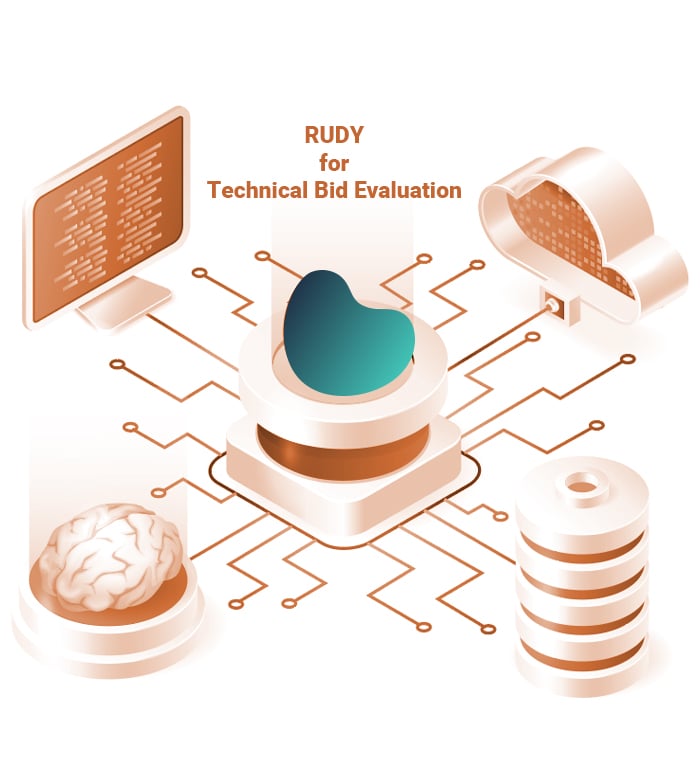
Where Rudy helps you
Rudy provides augmented decision-making capabilities for a typical technical evaluation process

1
Data Sheets
- For Mechanical and Electrical disciplines, you can upload your datasheets into Rudy to create Technical Bid Tabulation
- For Piping and Instrumentation displines data sheets created by other tools like Hexagon, Aveva or ApsenTech can be brought in using standard integration methods

2
Material Requisitions Package
- Rudy can be used to compile & send the MR Package(vendor documentation protocol, spare requirements) to be sent to suppliers along with a digital TBE that suppliers can directly update

3
Technical Bid Tabulations
- Rudy consumes and compiles the technical bids from suppliers quickly, across multi-tag MRs
- With our proprietary IP algorithm based on ELP capabilities, Rudy allows the Engineers to quickly judge the offers and raise TQs within minutes of uploading the offer
- Suppliers can respond to these TQs without any onboarding or system access
- Rudy creates the final TBE tabulation with a click of a button

4
Lessons Learned
- Very soon, Rudy will launch the lessons learned module which will allow changes identified by item to be captured and entered into Rudy for use in the next project. This will ensure that gaps between "As-required, As-designed, As-built and As-implemented" are minimized or eliminated
Features
Rudy provides automation and collaboration features that highlight the discrepancies in supplier responses and engineering drawings, while serving as a singular source platform to capture resolutions for all issues and discussions across all stakeholders. Rudy provides the following core modules :
- Bid Evaluation
- Inter Company Collaboration
- Analytics & Dashboard
- Knowledge Management
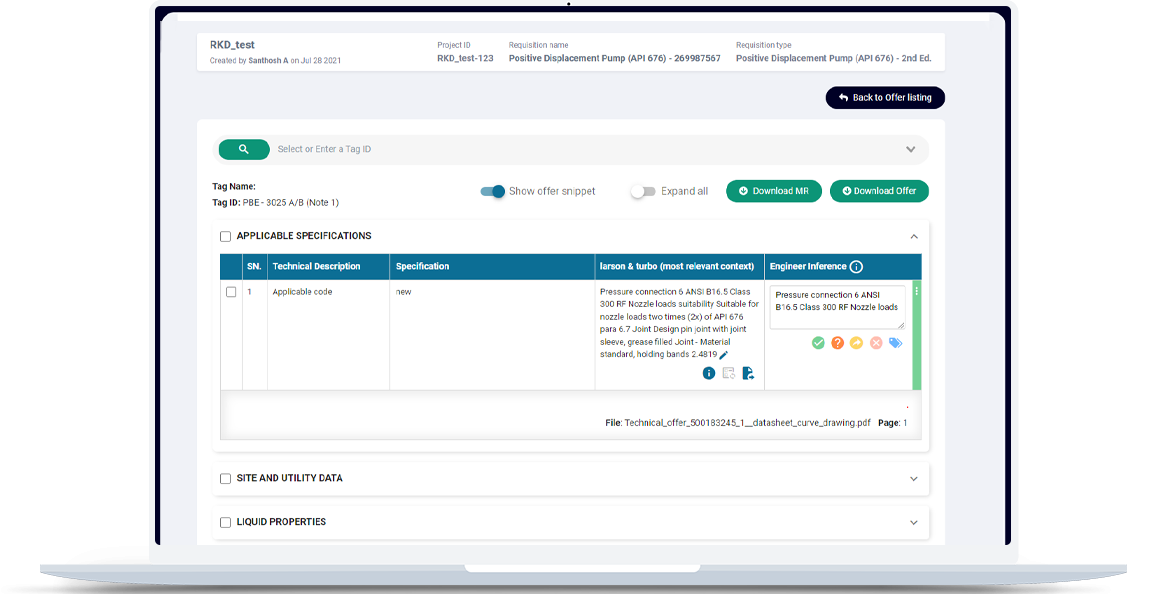
Bid Evaluation Module
Engineers can upload material requisitions and supplier technical responses. Rudy will compare them to highlight discrepancies.
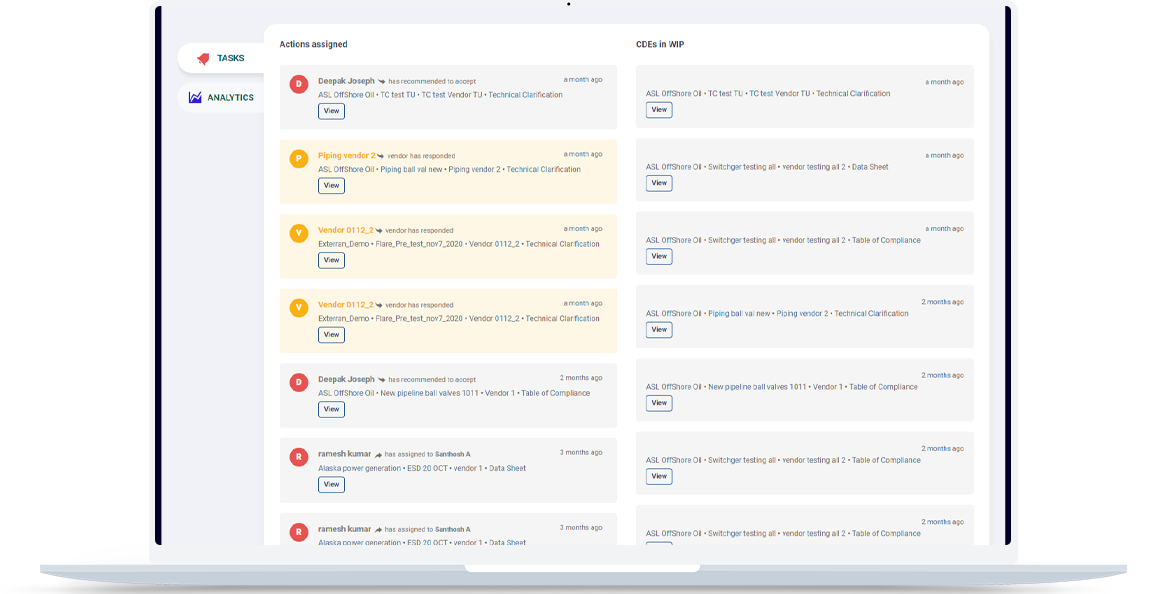
Inter Company Collaboration
Instead of creating technical queries in Excel spreadsheets, engineers & buyers can create them within the system by attribute. RUDY's collaboration suite will capture the discussion time-line and decisions made.
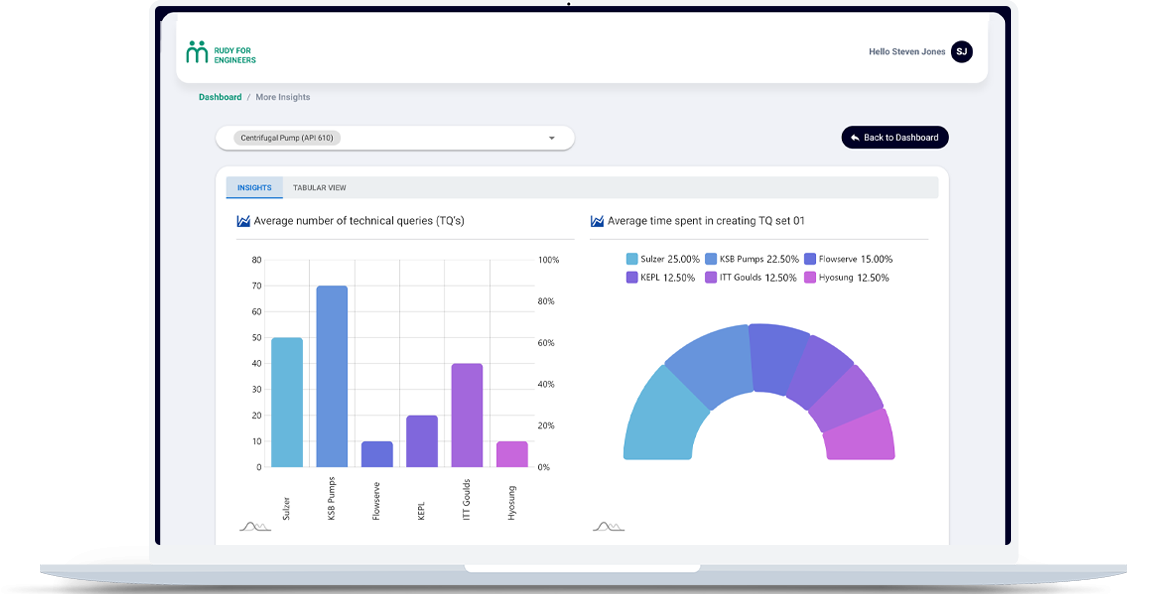
Analytics & Dashboard
RUDY provides user based dashboards & offers analytics by item, supplier & project. With modern API based architecture, any data in RUDY can be fed into your corporate analytics data warehouses. You own all data in RUDY.
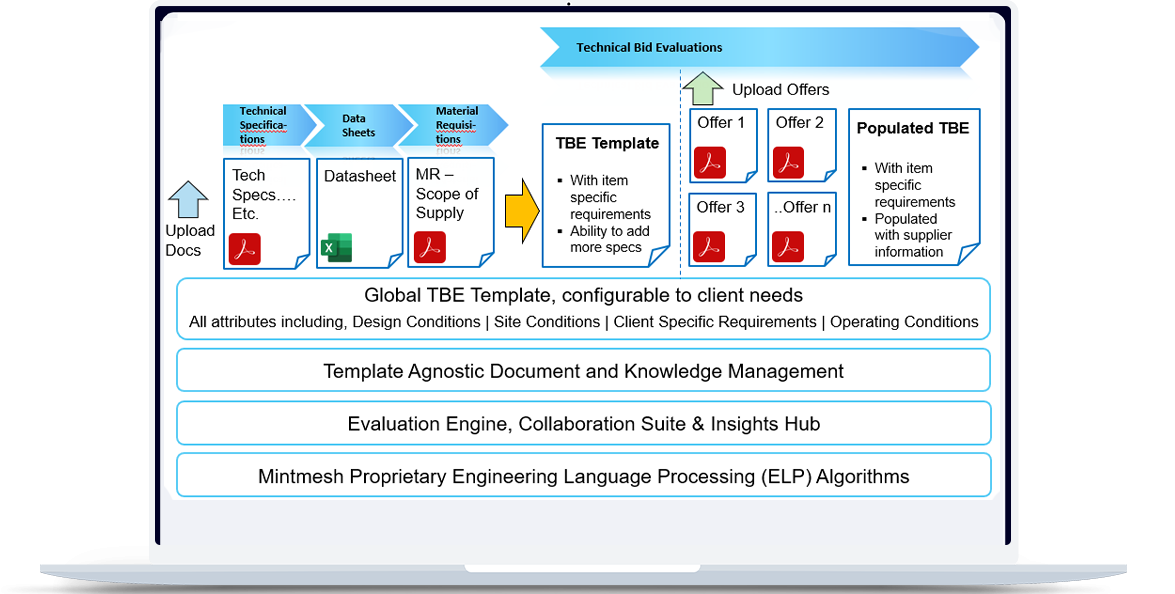
Knowledge Management
RUDY will become your single system of record with all requirements, offers, technical queries, collaboration timeline, supplier scorecard & relevant eta-data per item bid tab. Engineers can search, analyze & refer to this information for future projects

